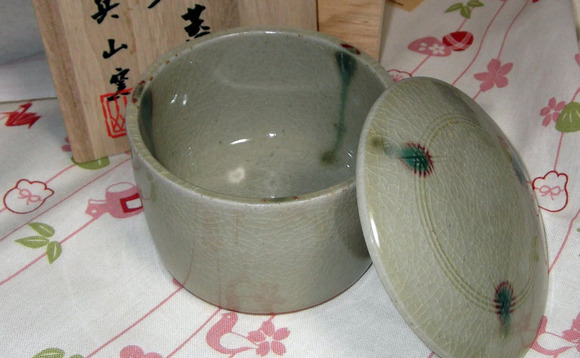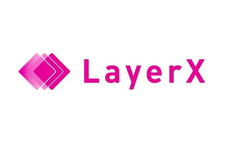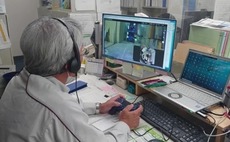
Portfolio: New Horizon Capital and Tachikichi

New Horizon Capital has turned around ceramics maker Tachikichi by emphasizing its unique connections to Japanese culture. Now the GP hopes that strategy can take the company beyond its old restraints
When Kyoto's Revitalization Support Council came looking for a backer for troubled ceramics retailer Tachikichi Corp, New Horizon Capital was eager to take on the challenge. The GP saw the takeover as an opportunity not just to help rebuild a company, but to bring new energy and a fresh set of ideas to the Japanese ceramics industry, once world-renowned but suffering from the effects of an economic downturn and lacking innovative business approaches.
"In this market, the CEOs at most of the manufacturers are old - sometimes 80 or 90 years old - and don't have the time to run the business," says Naoko Hatakeyama, executive partner at New Horizon. "Japanese ceramics are technically very strong and very good, but if we don't create some economic mechanism, it's very hard to maintain this industry in Japan."
Since taking a majority stake in Tachikichi in February 2015 for JPY1.1 billion ($11 million), New Horizon has tried to recapture the company's flagging market share through shoring up the retail division and overhauling the brand development staff. Just over a year later, the firm believes it has successfully guided Tachikichi through the first stage of its transformation and is on track to return the company to its former glory.
Though Tachikichi only reached crisis point recently, the warning signs for the 260-year-old enterprise had been building for years. Having dominated the ceramics market following the Second World War through a combination of high quality, affordability and its own chain of retail outlets, the company's success seemed assured. However, trouble surfaced when Japan's economy slowed in the 1990s. Increasingly price-conscious consumers took to shopping at discount stores, where they could find ceramics of an acceptable quality at a lower price than Tachikichi's boutiques.
"Because Japanese growth had declined, their business became a little slower; they could not shift to other distribution channels," says Hatakeyama. "They have more outlets now, but at the time they were spending too much on their own department stores, which were generating less revenue each year."
The decline spread across Japan's ceramics industry, which had largely adopted Tachikichi's retail strategy. A report published by the EU-Japan Centre for Industrial Cooperation the year of New Horizon's acquisition showed a drop in domestic ceramic tableware production, from over 71,000 metric tons in 2010 to 56,000 metric tons in 2014. Both Japanese-style and foreign-style ceramics suffered, with production of the former dropping by nearly 8,000 metric tons and the latter dropping by over 5,000.
Vicious circle
The falling revenue from Tachikichi's department store network led to a chain reaction; the company could not afford to keep shelves stocked, leading to further loss of consumer interest. Creditors, increasingly concerned that management's cut-corner reaction to these misfortunes would lose Tachikichi the reputation it had built up since its founding in 1752, looked for any avenue to save their investment, eventually turning to the Revitalization Support Council to find a new owner.
"Tachikichi was in a difficult position; it could neither develop new products nor maintain its product inventory," says Tachikichi Representative Director and President Nobuo Watanabe. "With New Horizon's injection of capital, Tachikichi's credibility has recovered so that it has been able to begin new product development and secure product storage."
While New Horizon is no stranger to turnaround deals, this particular investment presented some unique aspects. The Council had contacted the GP in December 2014, seeking to finalize the takeover by the coming February. That left barely two months for New Horizon to assess the company and come up with an action plan for the makeover.
One advantage the private equity firm held was a degree of leverage with the banks holding Tachikichi's debt; while the company was on the verge of exhausting its credit, New Horizon was untainted by the previous management team's failings and could muster more goodwill from lenders. That would prove to be crucial, as taking over the company, especially on the short timeframe mandated, meant securing fresh loans from those same creditors.
Upon completing the takeover, one of New Horizon's first acts was a clean sweep of management. This was another unusual move, as the firm normally tries to retain as many managers as it can; in this case, however, because of the previous team's track record and poor relationship with employees, New Horizon decided to replace nearly all of the executives.
"We do not fire people often, but this time we had to do that, because of the short time period and the bad situation they were in," says Hatakeyama. "However, we do appreciate the previous management very much; we have kept contact over the last year and continued to communicate with them."
New Horizon's hunt for a replacement management team focused strongly on experience in department store supervision, in keeping with its plans to revitalize the company's retail outlets. It also sought candidates with corporate sales experience that could bring an established network to the company.
Another challenge the firm faced on the personnel side was the underutilization of Tachikichi's design staff, which contributed to the decline of the overall brand. After the takeover, New Horizon conducted an internal review of the design talent, and found a number of staff members who had chafed under the previous management, feeling their contributions were not given proper consideration and the company's existing brand image was too limited.
New Horizon took these concerns seriously, since one of the chief issues it had identified as holding back Tachikichi's future growth was a lack of new ideas - a real detriment given that until the early 2000s the company was a longstanding leader in Japanese ceramics design. The GP invested heavily in restructuring the research and development team and in supporting its development of fresh products; the company introduced 80 new designs this spring and plans to add 60 more this fall.
Reputational issues
Along with rebuilding the R&D team, New Horizon hired a former Nissan branding consultant to improve internal morale. The goal is to instill within employees a sense of ownership over the brand, and help them understand their importance to the overall company.
"New Horizon has endeavored to improve Tachikichi's brand value by involving regular employees in all business activities," says Watanabe. "Importantly, New Horizon has helped build a sense of unity not only with Tachikichi management but also employees by participating in internal meetings during the early reconstruction period. These strategies and hands-on efforts have helped to rehabilitate Tachikichi within a year."
Though the changes to the corporate structure have introduced a welcome energy and efficiency, bringing back Tachikichi's reputation would take external as well as internal change. New Horizon intended to raise the company's performance across the board to the highest standards in its history, to make up for the decline in the down years.
The most visible side of Tachikichi, after the ceramics themselves, is the company's retail operations, and this has been a principal focus for the GP. Standards at the department stores had declined to the point that procurement officers could only secure a two-week supply of the company's most popular items at a time - when the company's rules called for four times that.
The roots of the supply problem were partly in the tight constraints that creditors had placed on cash flow; New Horizon's involvement was enough to relax some of these limits, and the firm committed its own money to ease the backlog as well. Trimming inefficiencies has also been a major component, and New Horizon has had to be careful to make cuts in the right places. Its ability to identify the best opportunities for savings without going overboard was part of what recommended the firm to the Revitalization Support Council.
"We've had to cut some people out and bring these department stores to a reasonable size," Hatakeyama says. "Somewhere we have to spend more money, somewhere we have to cut costs - it's not only one way. They have lost sales opportunities because they didn't have inventory in the shops. Now they have enough inventory so they can sell at the right time."
While these improvements in efficiency and service have been essential in bringing customers back to the fold, New Horizon's plan for Tachikichi's restoration goes further than this. The GP plans to drop the company's previous emphasis on affordability, instead positioning it as an important touchstone for Japanese culture.
UNESCO's 2013 addition of Japan's traditional cooking and eating practices, called Washoku, to its list of intangible cultural heritage items is expected to be an asset to Tachikichi in this campaign, as is the company's historic connection to Japan. Washoku is supposed to be eaten using specific tableware and utensils, and the company plans to market its products for this purpose both in the domestic market and to overseas consumers, either Japanese expatriates or foreigners seeking to imbue themselves in traditional Japanese culture. Tachikichi's management has already targeted the Middle East, Europe and the US for its global marketing campaign, and New Horizon has supported the company in these goals.
Though the private equity firm has only owned Tachikichi for just over 15 months, the company is already seeing significant improvement. From a loss of JPY277 million for the financial year ended March 2015 - just after the takeover - Tachikichi has recovered enough to post a profit of JPY33 million for the most recent financial year. The GP sees its service improvements and rebranding efforts as equally important in Tachikichi's return to profitability, and it expects these initiatives to continue.
Cross-fertilization
New Horizon is also looking to take advantage of Tachikichi's resurgence by setting more ambitious goals for the company. It believes that along with helping to strengthen Japan's domestic ceramics industry, its emphasis on the company's Japanese heritage will stimulate interest among consumers in other aspects of traditional Japanese culture, leading to partnership opportunities.
"Our remit is to invest in companies where we can create value, and especially create value for Japan or Japanese industries," says Hatakeyama. "So we can either roll up or create new alliances, to create new value for the Japanese community. And this is particularly true because, if the companies stay at risk, it can be very hard. So we have to create new value for them."
Rather than seeking a partner in the same industry, New Horizon hopes that Tachikichi can create synergies across multiple areas. For example, the natural outgrowth of the food-based advertising campaign, in New Horizon's eyes, is a partnership with a Japanese food producer - each promoting the other as components of a traditional Japanese lifestyle.
Such a partnership could eventually become an exit opportunity when New Horizon is ready to hand the company to a new owner. The firm sees a sale of this kind as highly enticing, since such a partner will naturally have more creative ideas for the future of the company than a purely financial player. A strategic buyer will likely also be more invested in the health of the industry overall than another private equity investor.
For its own part, New Horizon hopes that the legacy of its investment in Tachikichi will be to inspire more Japanese PE firms to consider factors beyond the financial when choosing their investments and formulating their value-add strategies. While the rewards of investing in cultural or social assets may not be as easily quantifiable as monetary returns, there is a chance for a much greater long-term impact if a firm is open to such matters.
"As a private equity fund it's getting more important to find some intangible asset within a company and polish it," says Hatakeyama. "Japanese are still very weak on that, and we are trying to create cases to make them understand that value is not only found in tangible issues; there are intangible issues that we have to value as well."
Latest News
Asian GPs slow implementation of ESG policies - survey
Asia-based private equity firms are assigning more dedicated resources to environment, social, and governance (ESG) programmes, but policy changes have slowed in the past 12 months, in part due to concerns raised internally and by LPs, according to a...
Singapore fintech start-up LXA gets $10m seed round
New Enterprise Associates (NEA) has led a USD 10m seed round for Singapore’s LXA, a financial technology start-up launched by a former Asia senior executive at The Blackstone Group.
India's InCred announces $60m round, claims unicorn status
Indian non-bank lender InCred Financial Services said it has received INR 5bn (USD 60m) at a valuation of at least USD 1bn from unnamed investors including “a global private equity fund.”
Insight leads $50m round for Australia's Roller
Insight Partners has led a USD 50m round for Australia’s Roller, a venue management software provider specializing in family fun parks.








